+Viganò's Eulogy for +Williamson—and other responses
Overview of initial responses to Bishop Richard Williamson's death.
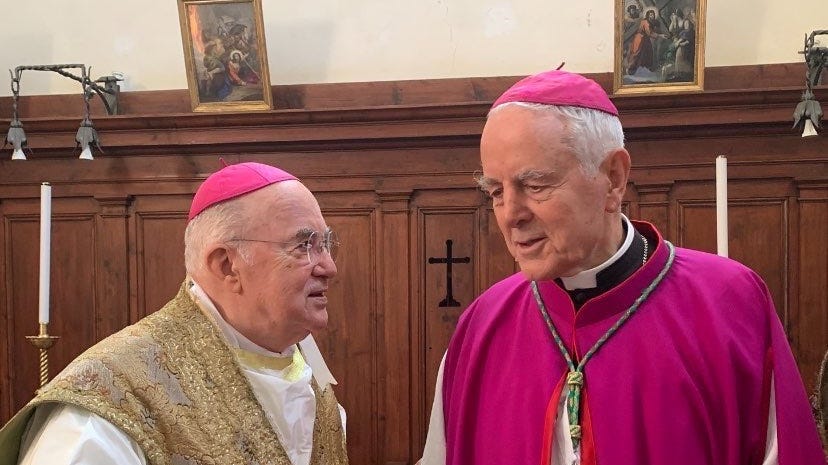
Overview of the initial responses to Bishop Richard Williamson's death.
Editors’ Notes
Following the death of Bishop Richard Williamson, there have been many articles and obituaries published. The obituary published here at The WM Review has been shared quite widely over the last few days.
However, there have not been as many Requiem Masses announced—and thus there have not been as many clerical eulogies, reflections or tributes available to share.
The first such text—at least, the first from a bishop, and from the context of a Requiem Mass—appears to be that of Archbishop Carlo Maria Viganò.
In this article, we shall give an overview of several responses to his passing, as well as provide Viganò’s eulogy here. This eulogy is important as the first of its kind, as already discussed—as well as for shedding light on the relationship between the two men.
The SSPX Communiqué
The first and in many ways the most significant response to Bishop Williamson’s death comes from the General House of the Society of St Pius X, the bishop’s former congregation:
The passing of Bishop Richard Williamson
We learn with deep sorrow that Bishop Richard Williamson has been called to God on January 29, 2025, at 11.23pm.
Following a cerebral hemorrhage, he was rushed to hospital on the evening of January 24, after having received extreme unction. He was 84 years old, having been born on March 8, 1940.
Ordained to the priesthood by Archbishop Lefebvre on June 29, 1976, he taught at the seminary in Weissbad for a year, then at Écône for five years. After a year as vice rector in Ridgefield, he directed the seminary in the United States for twenty years, then in Argentina for six, before retiring to England.
Consecrated bishop on June 30, 1988, he also served as the Society’s second Assistant General between 1988 and 1994.
Sadly, his path and that of the Society separated many years ago.
We recommend the eternal rest of his soul to your fervent prayers.
R.I.P.
(Source: General House—FSSPX.News)
Many found this statement to be a dignified and gracious way of commemorating a man with whom one has had bitter disagreements over the years. We are told that priests at the General House immediately began offering Masses for the repose of his soul, once his death was announced.
Further Responses
Respice Stellam, the late bishop’s own website, has begun publishing “Personal Tributes” The first is also of Archbishop Viganò, featured below. The second is of an Italian man named Cristiano Luigi.
Stephen Kokx was quick off the draw with an obituary for the late bishop, published at LifeSiteNews.
But Sean Johnson, regular commenter here at The WM Review, was even faster in publishing his personal reflections.
French site Media-Presse-Infos published a piece from Francesca de Villasmundo, which included large chunks of our obituary translated in French. We have since published our obituary in French too, although this was a rapid job, and we have not had a chance to check it line by line as yet.
Robert Moynihan at Inside the Vatican included the entirety of our obituary in his post, along with some other comments.
Fr François Pivert published his obituary, in which he manages to accuse the post-conciliar claimants of being “apostate popes,” whilst also praising Williamson for not being a sedevacantist.
Resistance blog Non Possumus published a notice—in which, intriguingly, they only named the first three bishops consecrated by Williamson. Their page banner also includes only the coats of arms for those three bishops.
Rorate Caeli published a strange post which consisted of the title “RNW: R.I.P.” and a picture cropped from a volume of Williamson’s Letters from the Rector. Novus Ordo Watch picked them up on this:
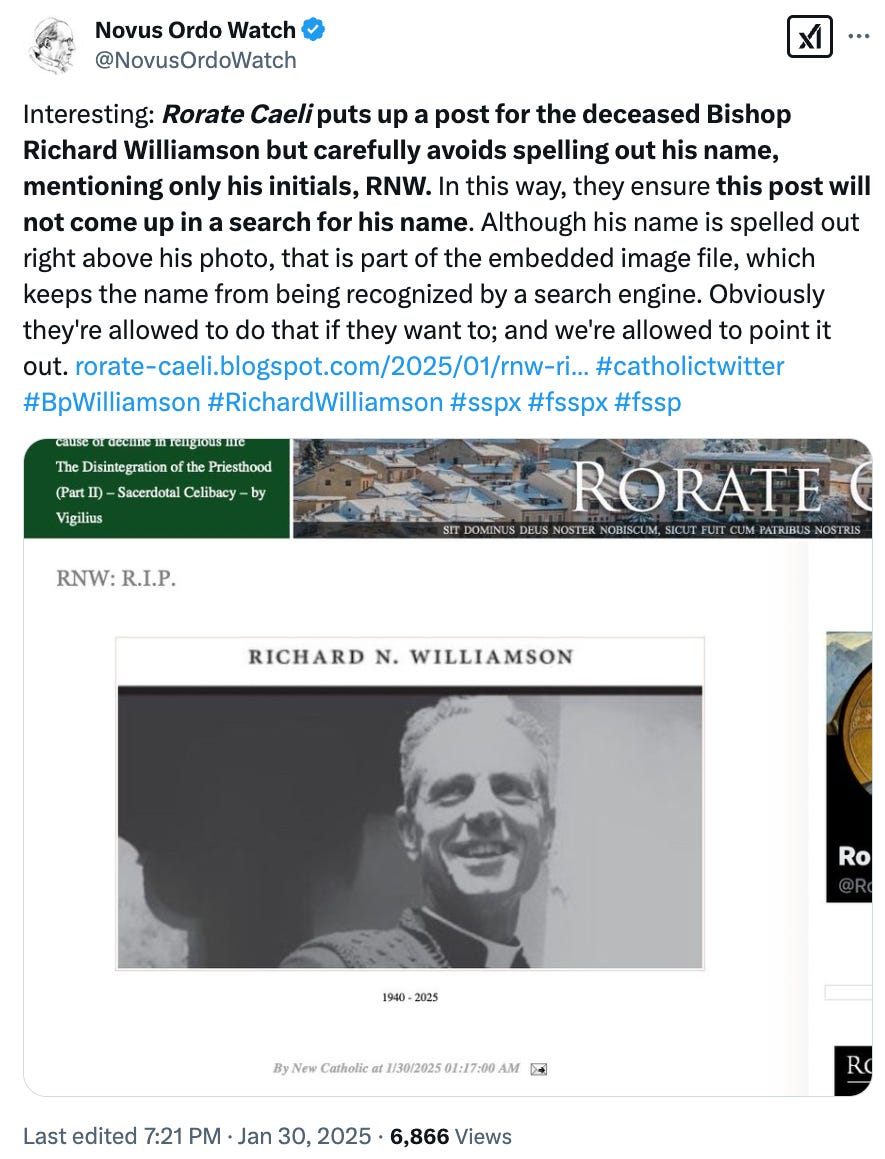
When asked directly, Rorate Caeli responded by saying that it was “[h]ilarious to know we live rent-free in someone’s head”
Anti-Catholic1 Russian political writer Aleksandr Dugin—about whose Bishop Williamson stated he was ignorant, even if he appreciated the odd comment and what, at the time, he mistakenly understood him to stand for—retweeted our obituary. In addition, Arktos Journal shared a quote from Dugin, apparently shared on facebook, which included a number of bizarre claims:
The idea that Williamson was Princess Diana’s spiritual advisor is ludicrous.
believes that he has found the true solution to this, namely a confusion with Anglican “Archbishop” Rowan Williams: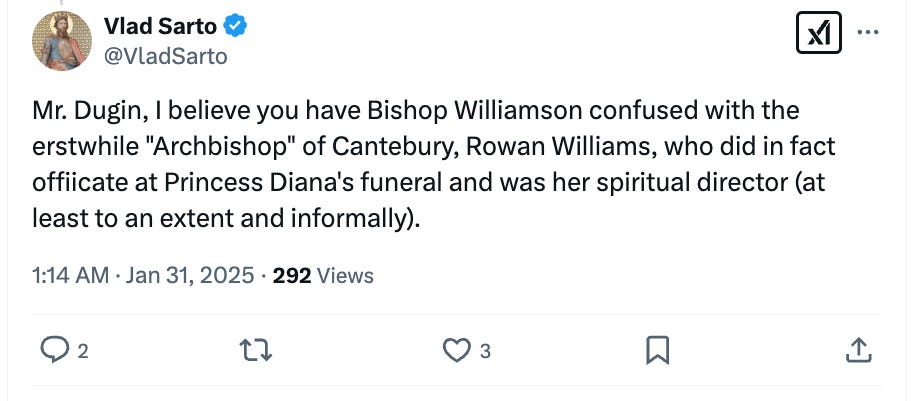
In light of this, it would seem that we should treat Dugin’s other claims in this post with a significant pinch of salt.
E. Michael Jones retweeted an announcement of the bishop’s death with the words “Outside the Church there is no salvation.” It seems that he is applying this to Williamson, implying that his words should be understood as:
“Outside the self-proclaimed Conciliar/Synodal Church…
Which is the the church of Fiducia Supplicans and Amoris Laetitia
Which long since has “reduce[d] to a meaningless formula the necessity of belonging to the true Church in order to gain eternal salvation,” as Pius XII taught in Humani Generis n. 27
Whose current leader praises Martin Luther and makes stamps featuring him and another Protestant heresiarch
Whose current later says that ‘all religions are a path to arrive at God’
… there is no salvation.”
Classy. So much for Jones.
Now, let’s consider Viganò’s emerging openness about his relationship with the late bishop.
Some background on Viganò’s response to +Williamson’s death
About 20 minutes after Williamson’s death was announced, Viganò posted the following photograph on Twitter without comment:
Soon after, he tweeted a memorial notice, along with the words of the Gradual from the Requiem Mass:
He also retweeted our obituary for the late bishop, available here:
On Saturday, 1 February, he made public a number of images of the catafalque from a Requiem Mass offered for the late bishop—along with the eulogy which is about the follow:
Viganò’s open association with Bishop Williamson has naturally furthered speculation and discussion about his alleged conditional episcopal consecration by the late bishop.
At this stage, this remains on the level of a widespread rumour. However, if true, confirmed and proved, then this conditional consecration would be enormously significant.
What sort of standard of proof would be necessary? That is beyond the scope of these notes. Obviously video footage would be more than sufficient, but not absolutely necessary.
However, we should note that those who accept the consecrations of the late Archbishop Ngô Đình Thục cannot justly exact a higher standard from Viganò than they accept from Bishops Guérard des Lauriers, Carmona and Zamora.
For more on this general topic, see below:
In the eulogy itself, Viganò shares his ideas about Williamson’s legacy, including…
Why Williamson took his particular stance in the face of the modernist Vatican
How the apparent disobedience of traditionalists is, in truth, fidelity to Catholic tradition, to the priesthood, and to the unchanging faith of the Church.
What his devotion to the traditional Mass and his resistance to conciliar errors teach us about the duty of every Catholic in these times of apostasy.
He presents Williamson’s life as one of sacrifice—a battle fought for Christ and his Church.
With thanks to Archbishop Viganò for his ongoing permission to republish his material. We have added some headings and line breaks to make the text easier to read online.
This was initially published in an unofficial translation by The WM Review. We have now replaced it with the official English translation.
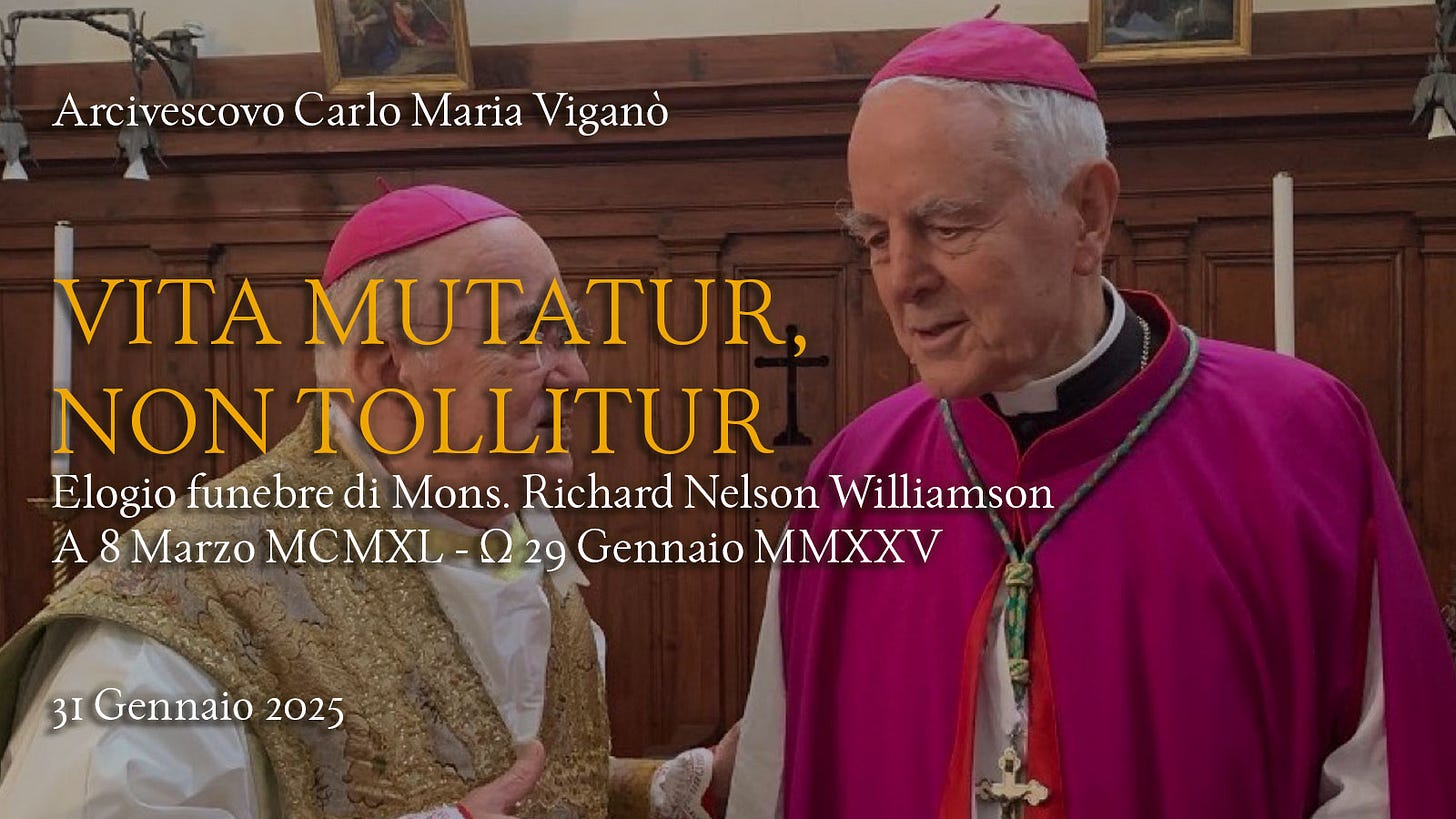
Vita Mutatur, Non Tollitur
Mgr. Carlo Maria Viganò
Eulogy for
Bishop Richard Nelson Williamson
31 January 2025
Tuis enim fidelibus, Domine,
vita mutatur, non tollitur;
et, dissoluta terrestris hujus incolatus domo,
æterna in cælis habitatio comparatur.Præf. Defunct.
A Life Given for the Church
A dear Friend, a venerated brother in the Episcopate, a companion in battle has concluded his earthly pilgrimage and has passed into eternity. And in these hours of mourning, alleviated only by the eyes of Faith, we cannot but weep for his departure, recall his strenuous fight, his fidelity, his work in the service of Holy Mother Church, and turn to prayer for the suffrage of his soul.
My fraternal friendship with Bishop Williamson is relatively recent. It began when I found myself clashing with the Roman authorities, after having reached an awareness of the conciliar revolution and its devastating effects – an awareness to which His Excellency had arrived long before me.
Of our meetings, I retain the memory of his ability to temper his unconditional adherence to Catholic Truth with a spirit of true Charity and an untiring strength in preaching the Word, opportune, importune [in season and out of season]. I remember his humble and affable manner.
A true British gentleman, he had a keen sense of humor. His vast erudition did not prevent him from conducting himself in a simple and modest manner, even in the poverty of his attire. I recall well the threadbare cassock he habitually wore and his reluctance towards artificial formalities.
The Legacy of Archbishop Lefebvre
Having converted from Anglicanism and been formed in the traditional Faith in the school of a great Archbishop Marcel Lefebvre, he knew how to remain faithful to him even in the face of the failings of his confrères, when human considerations and diplomatic calculations gained the upper hand over the legacy of the French Archbishop.
Bishop Williamson was disobedient for an apostate Rome; disobedient for an enfeebled conservatism that had forgotten the true reasons for its existence; disobedient for a world incapable of bearing the truth spoken to its face.
This apparent disobedience – which binds him indissolubly to the figure of Monsignor Lefebvre, the “rebel Bishop” who dared to challenge the modernism of Paul VI and John Paul II – was the reason why in 2012 he was abandoned and expelled from the Society of St Pius X, to which he belonged, due to his refusal to accept an agreement with conciliar Rome and with the pseudo-conservatism of Benedict XVI.
Resistance to Vatican II
From that time, Monsignor Williamson dedicated himself to the construction of a “Catholic resistance” that could effectively counter, on the one hand, the apostasy of the Roman authorities, and on the other, the compromises and concessions of the Society of St Pius X, whose superiors were increasingly absorbed in the pursuit of canonical normalization.
Bishop Williamson was a free man, particularly in refusing to conform to political correctness, and he never concerned himself with the image that the press painted of him. In his clear geopolitical vision, he foresaw many ideas that today are confirmed by facts, beginning with the role of Zionism in the attack against Christian society.
He endured trials and humiliations without seeking attention, maintaining serenity of soul, and in all things seeking only the glory of God and his own assimilation to Christ the Priest.
When, in 2020, I raised my voice to denounce the psycho-pandemic fraud, we had the opportunity to share the same vision of the world and its geopolitical struggles, identifying in globalism the point of convergence of modern ideologies, and in the relationship between the deep state and the deep church the true threat to humanity and to the Church.
A Devotion to Our Lady and the Holy Mass
He was a fervent devotee of the most holy Virgin, and especially of Our Lady of Fatima. His conviction in the victory of the Immaculate Heart, according to the promises of Our Lady, was the beacon of his interior life and of his action, and the faithful recitation of the Holy Rosary his invincible weapon.
The cerebral hemorrhage that struck him in recent weeks did not prevent him, by the grace of God, from receiving the consolation of the sacraments and from being accompanied by those who were close to him at the moment when obdormivit in Domino [he fell asleep in the Lord].
Thus, in a quiet sleep of the body, the Lord willed that he should conclude a life spent as a fighter in the trenches of Holy Church, mourned by friends and still respected by adversaries.
The Sacrifice that unites the faithful, living and dead
Catholic doctrine on suffrages, marvelously expressed in the traditional liturgy which Bishop Williamson always jealously preserved and transmitted, draws from the second book of Maccabees in the Old Testament:
Propterea Judas Macchabaeus… pro defunctis expiatorium sacrificium obtulit, ut a peccato solverentur (Therefore Judas Maccabeus… offered the expiatory sacrifice for the dead, that they might be absolved from sin) (2 Macc. 12:45).
It is this expiatory Sacrifice that we celebrate with the solemn obsequies of our venerated brother Bishop.
A sacrifice prefigured by the signs of the Old Law and fulfilled in Christ in the New and Eternal Covenant. A sacrifice that Bishop Williamson celebrated daily, in the form preserved through the centuries by Holy Church, for he rightly saw in it the fulfilment of ancient promises, and the promise of infinite graces for the future.
It is the Holy Mass, in the end, that unites all Catholics, and in particular us Ministers of God, in an unbroken procession that traverses every region of the earth and every time until the end of the world. It is the Apostolic Mass, the Mass of St Gregory the Great, of St Pius V, of St Pius X, of Padre Pio, of Monsignor Lefebvre.
The Mass that is ours, inasmuch as it is the prayerful synthesis of our faith, of the faith of the Church. The Mass that is ours and the faithful’s, and yet which conciliar and synodal Rome would deprive us of, for it well knows that that venerable Rite confutes and condemns all its errors, all its cowardly silences, all its vile complicities.
A Priest to the End
Tu es sacerdos in æternum secundum ordinem Melchisedech [Thou art a priest for ever according to the order of Melchisedec], says divine Wisdom. So long as there are priests and Bishops who follow the example of true shepherds like Archbishop Lefebvre and Bishop Williamson, the perpetual Sacrifice shall not fail, and it is thanks to it that we shall succeed in victoriously passing through these dramatic moments of tribulation that herald the last times.
This assimilation to the Sacrifice cannot be merely ritual. Every priestly soul – I say this to you, dear brethren clerics – must also become a mystical victim, in the model of the pure, holy, and immaculate victim, in order to fulfil in its own flesh what is lacking in the sufferings of Christ, for the good of his body, which is the Church [adimpleo ea quæ desunt passionum Christi, in carne mea, pro corpore eius, quod est Ecclesia] (Col 1:24). This is what Bishop Williamson did, who accepted to suffer persecution and exile for the love of Christ, and to avoid reneging on the solemn commitments assumed in the fullness of the Priesthood.
In Paradise, gathered in adoration of the Lamb and of the most holy Trinity in the eternal celestial liturgy, all the Saints of all times are united by love for the perfect Sacrifice. Let us pray that Bishop Williamson may be received among the heavenly ranks, and that from there he may watch us as we repeat the sacred gestures and the holy words which he had upon his lips until a few days before he left us.
Fidelis Inveniatur—The Legacy of a True Shepherd
The episcopal motto of Monsignor Williamson was Fidelis inveniatur [Let him be found faithful], drawn from the first letter to the Corinthians
Sic nos existimet homo ut ministros Christi et dispensatores mysteriorum Dei. Hic iam quæritur inter dispensatores ut fidelis quis inveniatur (1 Cor. 4:1–2).
(So let a man consider us as ministers of Christ and dispensers of the mysteries of God. Now what is required of dispensers is that each be found faithful)
For the dispenser is not the owner of the good, but the one who must pass it on as he received it to those who will come after him. And this is exactly what our brother bishop did, mindful of the words of the Apostle:
Ego enim jam delibor, et tempus resolutionis meæ instat. Bonum certamen certavi, cursum consummavi, fidem servavi. In reliquo reposita est mihi corona justitiæ, quam reddet mihi Dominus in illa die, justus judex: non solum autem mihi, sed et iis, qui diligunt adventum ejus. (2 Tim 4:6–8).
[For I am even now ready to be sacrificed: and the time of my dissolution is at hand. I have fought a good fight, I have finished my course, I have kept the faith. As to the rest, there is laid up for me a crown of justice, which the Lord the just judge will render to me in that day: and not only to me, but to them also that love his coming.]
+Carlo Maria Viganò, Archbishop
31 January 2025
Read next:
Against Mentevacantism—Bishop Donald Sanborn
HELP KEEP THE WM REVIEW ONLINE!
As we expand The WM Review we would like to keep providing free articles for everyone.
Our work takes a lot of time and effort to produce. If you have benefitted from it please do consider supporting us financially.
A subscription from you helps ensure that we can keep writing and sharing free material for all. Plus, you will get access to our exclusive members-only material.
(We make our members-only material freely available to clergy, priests and seminarians upon request. Please subscribe and reply to the email if this applies to you.)
Subscribe now to make sure you always receive our material. Thank you!
Follow on Twitter, YouTube and Telegram:
Consider the following hair-raising comments from a hair-raising interview with Dugin, apparently in 1998:
GRZEGORZ GÓRNY: In a word, from your point of view, all anti-Catholic activities in Poland are beneficial?
ALEKSANDR DUGIN: Exactly. Catholicism must be dismantled from within, Polish Freemasonry must be strengthened, secular subversive movements must be supported, and heterodox and anti-papal Christianity must be promoted. Catholicism cannot be absorbed into our tradition unless it is profoundly reoriented towards nationalism and anti-papalism. If there were a lodge in Poland similar to Ireland’s Golden Dawn, whose leaders—such as William Butler Yeats or Maud Gonne—were, on the one hand, Catholics, and on the other, fanatical occultists inspired by Celtic culture, then there would be some hope. Such people could dismantle Catholicism from within and reorient it in a more heterodox or even esoteric direction. My acquaintances in Poland tell me, moreover, that there are small groups of this kind, connected with Thelema or the legacy of Aleister Crowley.
The interview contains many other such comments. Source



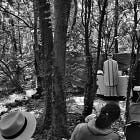
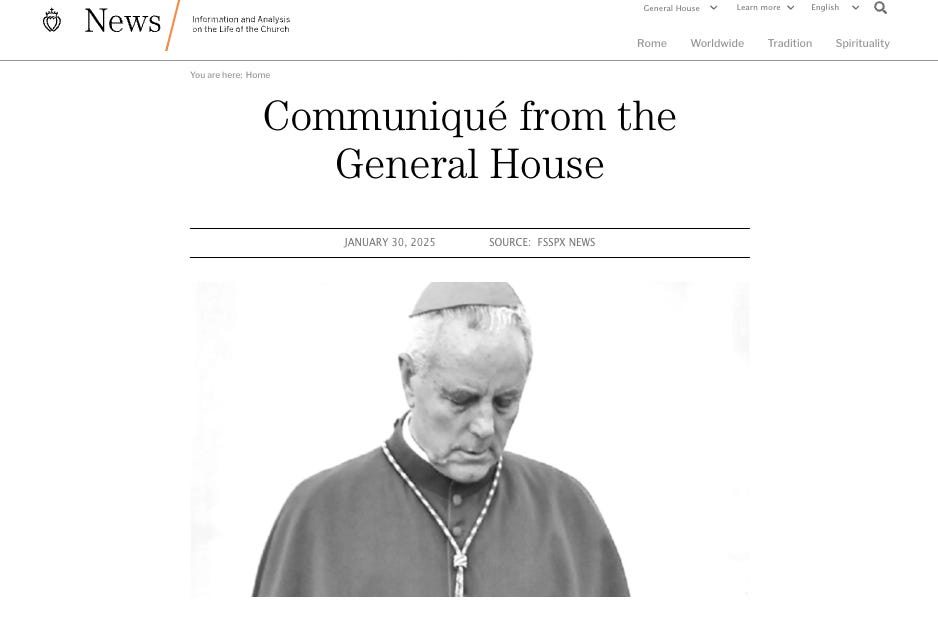
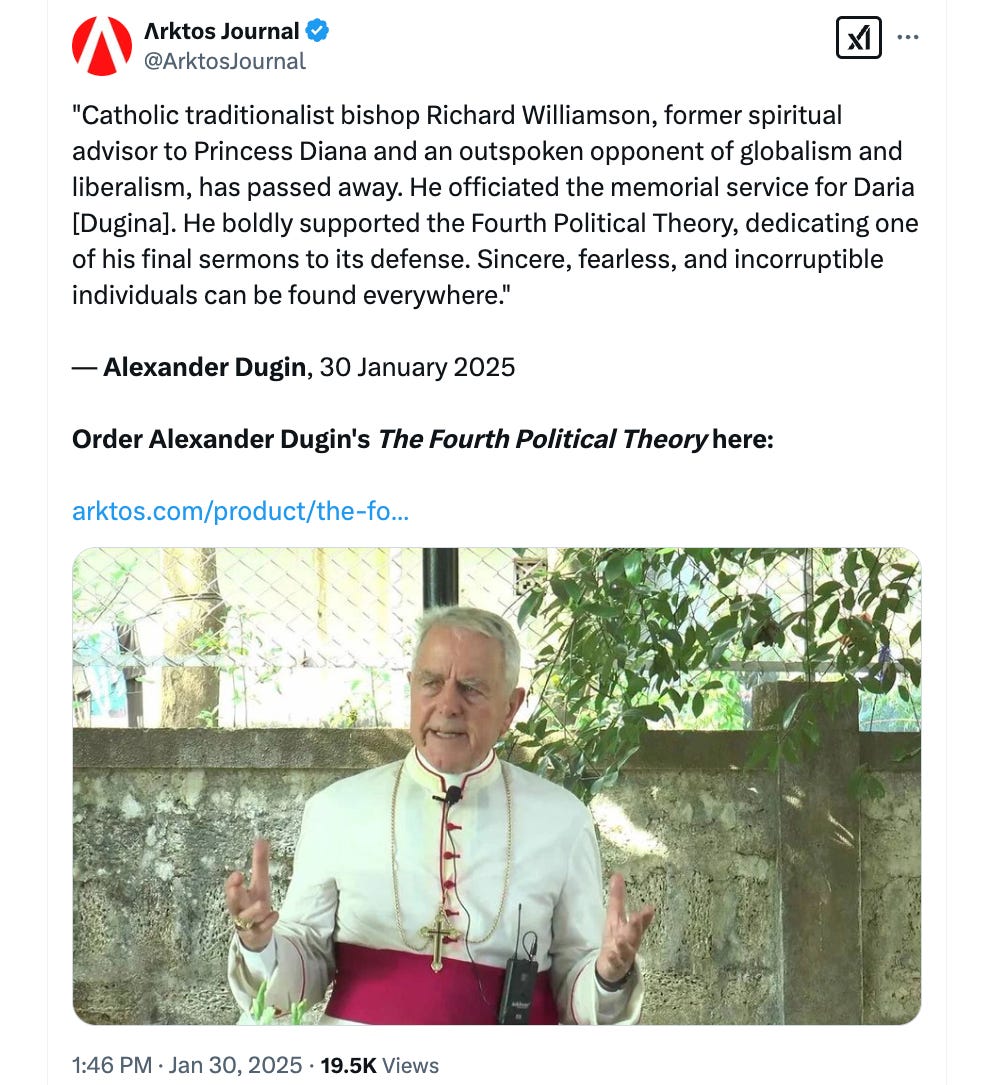
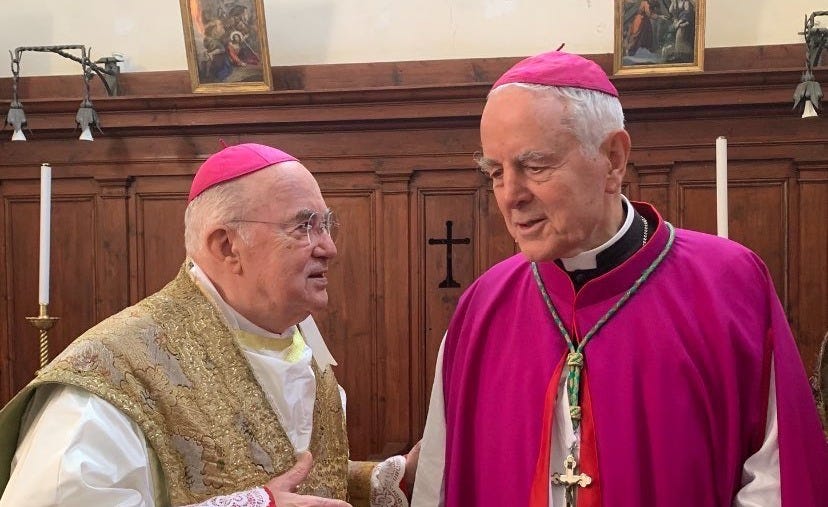
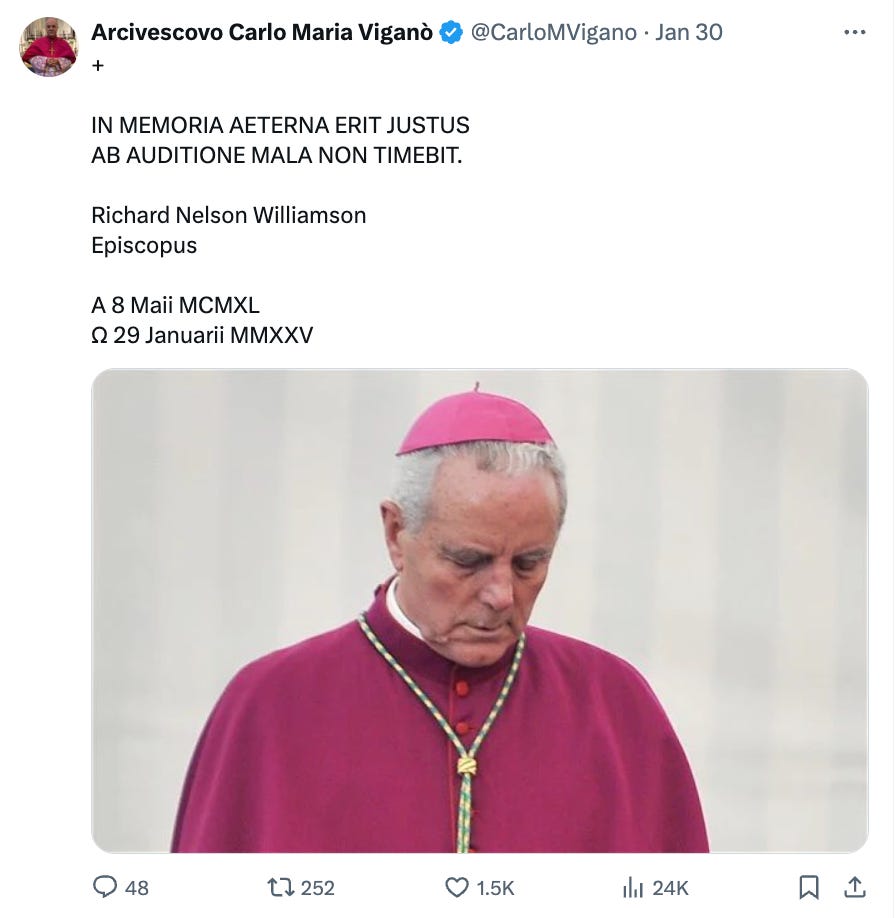
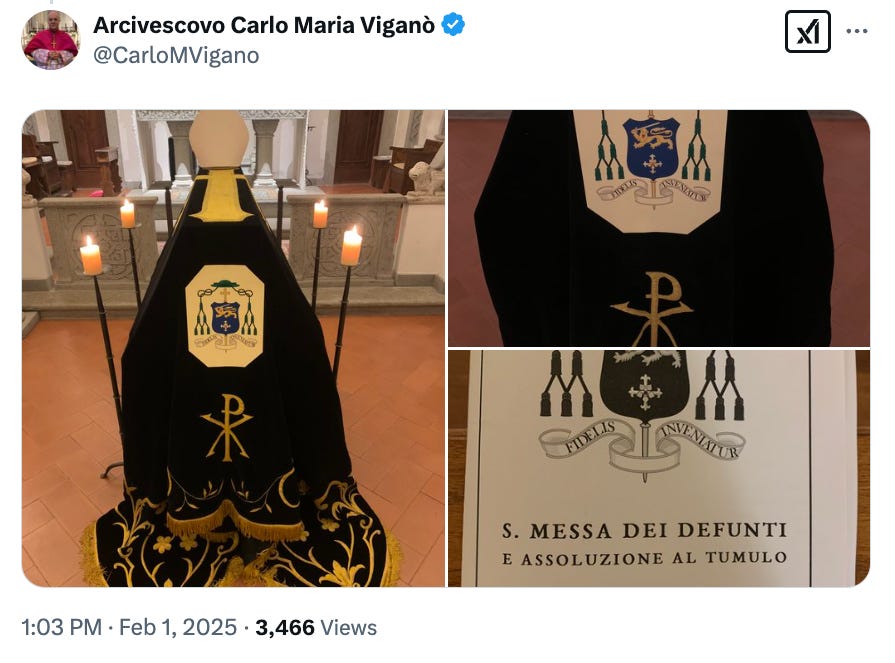
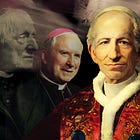
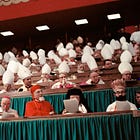
May perpetual light shine upon him, and may he rest in the Peace of Christ forever. Amen.
Was the Bishop Williamson buried in Viterbo?